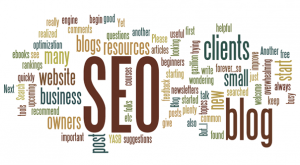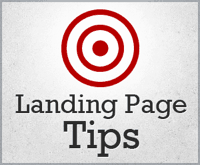5 Keys to Maximizing Demand Generation
 Demand generation requires discipline, patience, and focus. The process of building awareness, creating interest, and provoking action requires a deeper strategy than simply building a marketing campaign. Here are a five key considerations to maximizing demand generation:
Demand generation requires discipline, patience, and focus. The process of building awareness, creating interest, and provoking action requires a deeper strategy than simply building a marketing campaign. Here are a five key considerations to maximizing demand generation:
Website as hub
Design marketing, sales, fulfillment, and customer service through the prime portal for the company – your website. This can increase efficiency when interacting with your markets and lead to greater demand for your solutions. The site can be used to aggregate contact data from marketing inquiries, product orders, shipments, and feedback forms. By enhancing visitor experience and maximizing the functionality of your site, it becomes the lead touchpoint and will convert customers to advocates.
Your website can be used as a demand generation vehicle in itself through design elements that align with a lead’s decision-making process, build engagement, and progressively reduce objections. In order to be effective at demand generation, it’s also important to ensure that the site appeals to market participants at different points in the buying cycle.
Deploy multiple tools
Effective demand generation requires a basket of tools. Start with an integrated marketing approach that deploys multimedia communication tools to cultivate relationships. Channels such as blogs or Twitter feeds provide effective exchange mechanisms where suspects, prospects, and customers can connect with your company and provide meaningful information that can be used for future marketing campaigns.
There is no shortage of options for database mining, touch point tracking, and contact management. Tools that manage the distribution of information and track lead activity provide more robust market interaction and granular analytics. And with marketing automation tools such as our Lead Management Automation™ platform, companies are able to cultivate lead relationships and measure campaign effectiveness.
Know thy audience
The first step is to analyze your markets. Not just demographics, but psychographics and buying triggers. It’s important to develop a persona or profile for your market(s) that provides marketing and sales with an audience they both can connect with. Marketing campaigns should be persona-centric, letting the audience figure out why they want your solutions.
Turn your marketing strategy from ego-centric to customer-centric. Ask questions, get others to praise your solutions, and make buyers feel good about choosing your solutions. Successful marketers understand who their buyers are by learning about what they do, what they care about, and how they see themselves. Above all, learn how to talk with your market(s) and not at them.
Remember the long term
In a perfect world your B2B sales cycle would be complete within 30 days. Maybe two weeks. But that’s just not the way most purchases happen. With lead times of six months, a year, or even 24 months, demand generation is a long-term proposition. Keep in mind, it can take up to ten impressions just to register in a suspect’s consciousness!
Integrate marketing, sales, and customer experience
Future demand is generated through reputation management. The reputation you earn is formed through the entire process a customer experiences, from first contact to solution delivery to satisfaction follow-up surveys. It is important to blend your marketing strategy, sales execution, fulfillment process, and customer feedback together.
Throughout the lead nurturing process a strategy of integrating marketing and sales touch points is essential to generating demand. Messaging is more effective when combined with a marketing inquiry follow-up call from a sales agent. As a lead moves through the marketing pipeline it often becomes necessary to execute sales calls in order to elevate a marketing-qualified lead to a sales-qualified lead.
Once a purchase is made, customer satisfaction feedback through forms and phone surveys help to deliver the expectation that the relationship doesn’t end with a sale. And though a sales conversion has taken place, demand generation is still necessary to maintain a long-term customer relationship.











